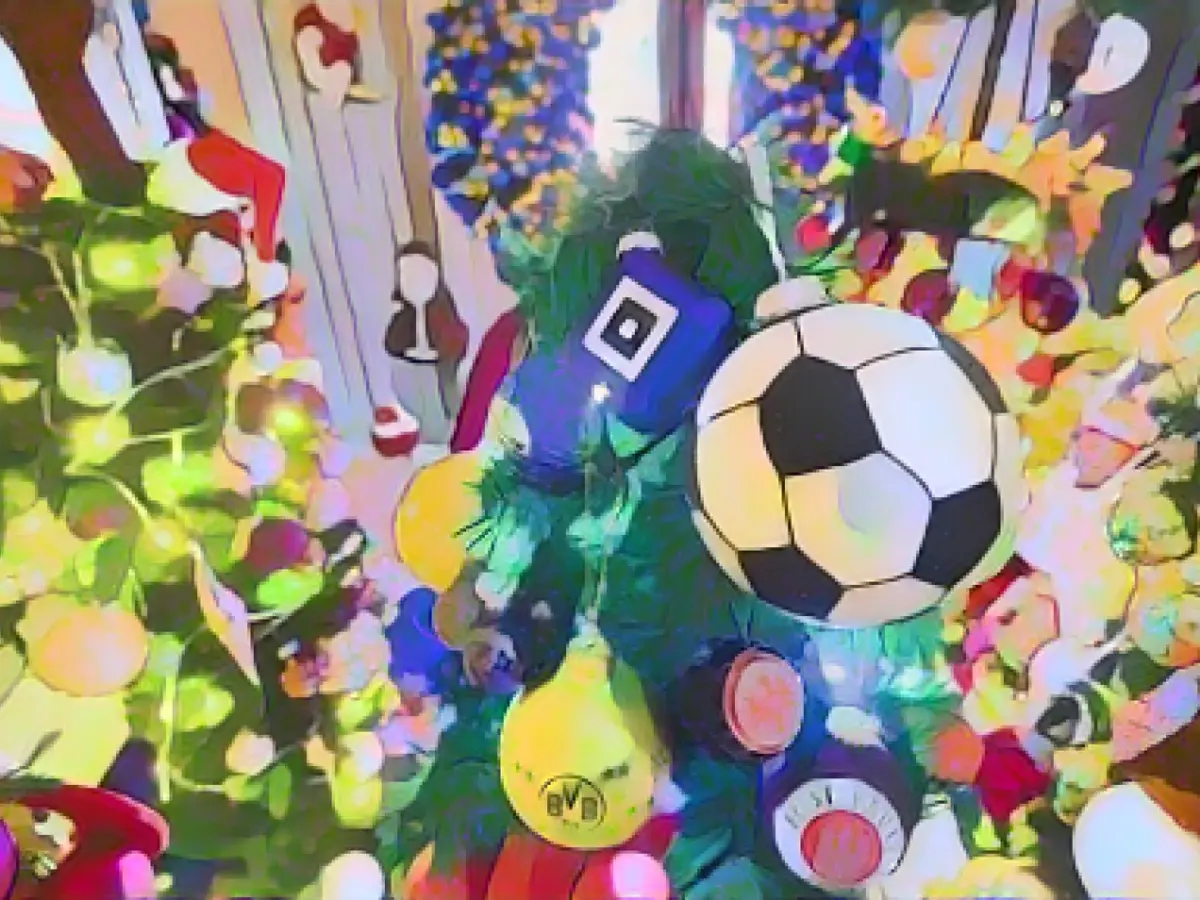Customs - Saxony-Anhalt's pre-Christmas traditions are more informal
Christmas traditions in Saxony-Anhalt are now more informal and individual. "It has become rare for people to consciously await the birth of Christ on December 24th with their customs," said Annette Schneider-Reinhardt, scientific advisor for cultural heritage at the Federal Association for the Preservation of Local Heritage (BHU) in Bonn. "Instead, retailers start the hot phase of the Christmas rush at the beginning of December. Christmas confectionery is already in the stores at the beginning of September."
After coronavirus, there are more Christmas parties with friends and colleagues. "The trend is towards more informal get-togethers at the mulled wine stall at the Christmas market, perhaps also because of the rise in restaurant prices," said Schneider-Reinhardt. "The pre-Christmas setting up and decorating of Christmas trees before or after 1 Advent is also on the increase." In the past, Christmas trees were put up on the morning of Christmas Eve.
"More and more front gardens are also being decorated with light elements," said the speaker. "The tradition of the candle arch, which originated in the Ore Mountains, has more or less spread throughout Germany. These candle arches are now decorated with entire landscapes. New are candle arch benches on windowsills for elevated placement so that everyone can admire the arch from outside."
The Ilberstedt local history association near Bernburg (Salzland district) claims to have discovered a special feature. Knecht Ruprecht is said to come from the former Kölbigk, i.e. Saxony-Anhalt. The reference is made because there is a legend of a dancing miracle. The priest there, who cursed troublemakers at Christmas mass to dance endlessly around 1021, is called Rupert or Ruprecht in the legend.
"The gift-giving custom at Christmas was triggered by the figure of St. Nicholas, who has appeared in legends since the 6th century. St. Nicholas was accompanied by the devilish companion Ruprecht," said Schneider-Reinhardt. "He took on the pedagogically negative role of punishment, which reinforced the positive aura of St. Nicholas."
As a result of the Reformation, a new figure was initially invented, particularly in Protestant areas, in the form of the "Heele Christ" as the Christ Child. He was usually played by young girls as the bringer of gifts. There is still a "Heele Christ Christmas market" in Bernburg today.
But why refer to Ruprecht? For the public relations work of the Ilberstedt local history association, the story of the dancing miracle offers much more. "For example, an attribute to the place name could refer to something unique, i.e. 'Tanzwunderort Ilberstedt'," said the expert. "Why not initiate an artists' competition for a sculpture of dancing people?" In terms of tourism, the reference to the former monastery grounds and the cemetery is important. After all, there is already a reconstruction of the monastery complex as a scaled-down model on site.
Federal Association for Culture, Nature and Homeland (BHU)
Read also:
- Rescuers fight for trapped police officers
- Frost and light snowfall in Saxony-Anhalt
- CDU wants MV protection fund to be audited by Court of Auditors
- Gotteslob: Seven million copies in ten years
- Despite the shift towards more informal Christmas celebrations in Saxony-Anhalt, the tradition of lighting candle arches, which originated in the Ore Mountains, has spread throughout Germany.
- The figure of St. Nicholas, who has been a part of legends since the 6th century, is often associated with the origin of the Christmas gift-giving tradition.
- In Bernburg, the local history association has claimed a unique connection to the Christmas tradition, suggesting that the character of Knecht Ruprecht originated from the former Kölbigk, now part of Saxony-Anhalt.
- The pre-Christmas season in Saxony-Anhalt now sees an increase in informal get-togethers at mulled wine stalls and the decoration of front gardens with light elements, reflecting the changing nature of Christmas traditions in the region.
- With its special Christmas traditions and historical sites, Bernburg offers potential for tourism initiatives, such as an artists' competition for a sculpture of dancing people to mark the location's unique connection to the character of Knecht Ruprecht.
Source: www.stern.de








